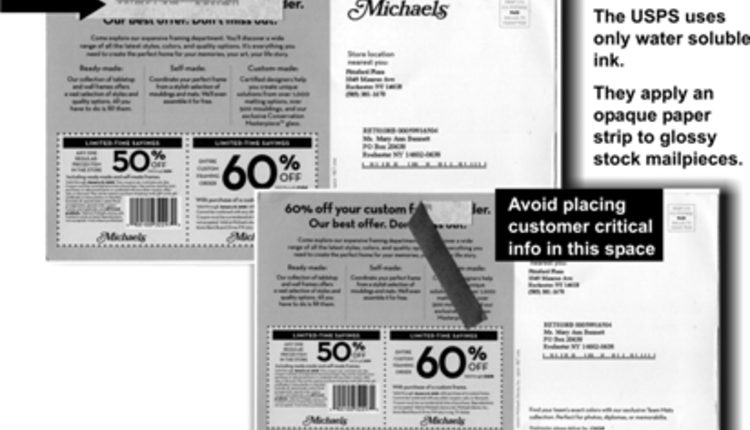Several years ago, we did an in-depth analysis of our production staff costs and reached several conclusions:
At the same time, we also examined how we could operate the equipment more efficiently with fewer, better-trained and more productive personnel. Additionally, we recognized the new postal sorts, equipment advances and the ability to have more control over clients' data had produced an environment that reduced the need for a large number of highly trained personnel.
Alternatives
We made a conscious decision not to hire any more production staff and temporarily not replace those lost through attrition. Instead, we began to establish a working relationship with three temporary agencies to call upon as the workload necessitated. At the same time, we expanded our cross-training with our key group of experienced employees, increasing their wages and enhancing their benefit program. We shared our plan with everyone and explained that we expected this new approach to provide consistent workflow no early dismissals during slow periods and increased profitability, which would lead to continuing wage increases, greater benefits and more profit sharing.
The changes began to work, and key production employees began to recognize the benefits. They became more productive and made a concentrated effort to work with the temps and oversee the quality. They were also quick to point out the temps we should keep on the call-list and those that we should not ask to return. Additionally, regular employees would recommend those temps they felt might make potential full-time regular hires in the event we wanted to add to the key staff.
Obviously, using temporary or seasonal employees has required a more consistent approach to planning workflow. We set up a regular part of the production-planning schedule to address the need for daily and/or periodic use of temps. Generally, we are able to plan a week in advance and notify our selected temp service-providers. We would often ask for one or two more than we actually needed to allow for the no-shows that frequently occurred.
After a full year of operating in this manner, we recognized many positive benefits. Our operating profit margins had improved several percentage points, and our key people felt more empowered. All regular full-time employees received larger profit share dollars, and we established strong working relationships with three temporary agencies.
We have continued to stay on this course for three years. Currently, due to the extremely tight labor market, the program has benefited us in a different way. Although it is hard to find competent temps, we are still able to get sufficient people due to the long-term relationships we have developed with the agencies. They work harder to meet our needs, as we have been consistent clients.
Another positive aspect is the ability to find and test potential full-time regular employees without the cost and risk involved with hiring through ads and walk-ins. We are able to get a real sense of capability, reliability, work ethic and how they fit in with the other employees. The temps also get a chance to find out about our company and experience working with us without committing too soon. It seems to be the best of both worlds for both employer and employee. We have hired several people over this period, and in most cases it has turned out to be a good match.
Recommendations
There are several recommendations I would make if you are considering starting or expanding your use of temps and/or seasonal employees.
1. Interview several agencies at your plant and take them on a tour of your facility, pointing out the departments or areas where you would place temps.
2. Ask for references of current clients they serve and be sure to make those calls!
3. Negotiate a price structure (hourly rate) for the different positions you want to fill.
4. Write a clear information sheet, including your hours, breaks, rules and expectations of temporaries. Also, be sure to describe suggested attire for each, so you don't end up with women in dresses and heels for your production floor.
5. Find out the minimum number of hours a temp must work and most of all, how to handle a temp you deem unacceptable what is your obligation and/or what is the temp agency willing to do?
6. Get in writing what their standard procedures or costs are for going from temp to full-time for each position.
7. Ask what benefits, if any, they provide for their temps and the agency's pay procedures. The better they treat their employees, the better caliber and reliable temps they provide.
8. Once you have compiled all the information, choose at least two agencies that appear to have the best qualifications and programs and then begin to test them.
It may take a period of time and several agencies before you find the right temps for your operation. However, once you find a couple of good ones, it may help to improve your bottom line, lower your stress and meet your customers' needs!
This article was contributed by Beverly R. Lesher through the Mailing and Fulfillment Service Association (MFSA), which was formerly known as the Mail Advertising Services Association (MASA). Beverly Lesher has served for over three years on MASA Board of Directors. She is co-founder and president of Dasher, Inc., Harrisburg, Pennsylvania. Dasher was formed in 1985 as a start-up lettershop and since then has grown into a 41,000 square-foot, full-service Direct Marketing Company. The company was named Small Business of the Year in 1997, and the owners individually have been finalists for Inc. Entrepreneur of the Year Awards.
MFSA, formerly known as MASA, is an 80-year-old trade association for lettershops, mailhouses, fulfillment companies and direct marketing agencies. For more information, visit www.masa.org.




